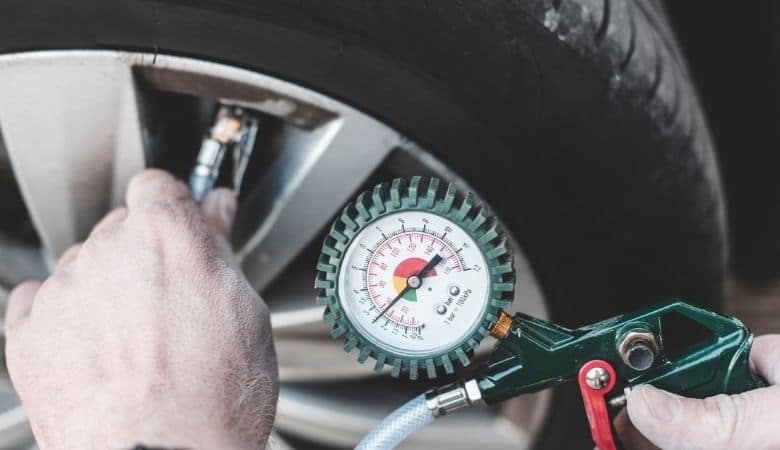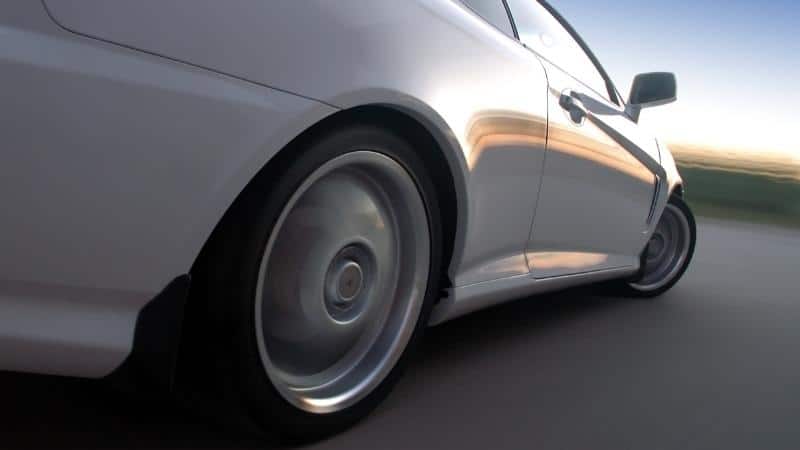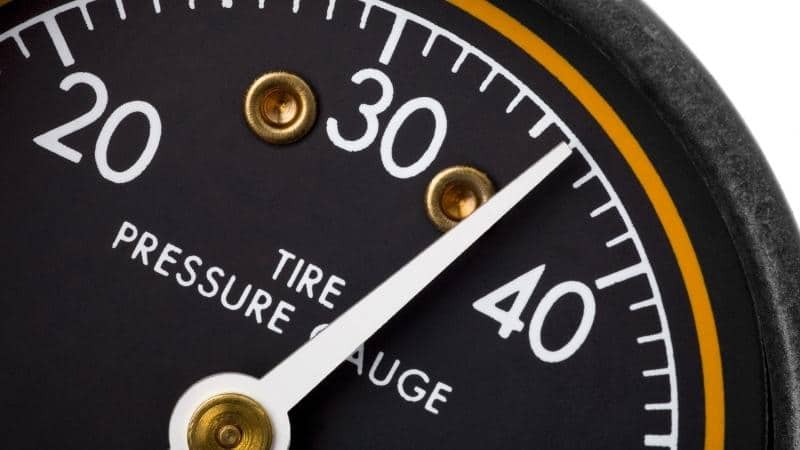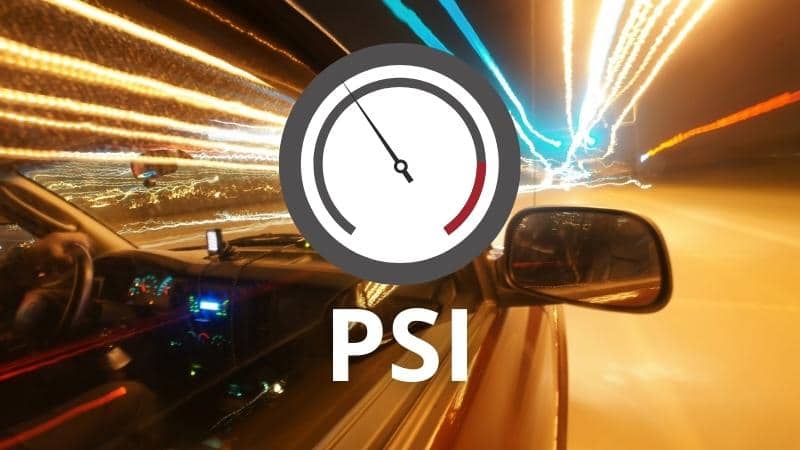There are a lot of factors that determine how your car performs in terms of acceleration, speed, and handling.
While most people pay attention to the engine and aerodynamics, too much action is going on in the wheels. When cars leave the manufacturing plant, they already have tire size specifications for optimum performance.
However, drivers’ preferences play a significant role in determining the level of performance they want to achieve. Most drivers choose to buy aftermarket tires with the hope of getting a better driving experience and gas mileage.
While this could impact the overall driving experience, drivers pay more attention to the tire pressure. If you expect your car to be faster and perform better, you need to shift your attention to the tire pressure.
Please take a look at this breakdown on how it can affect acceleration, speed, and performance.
Does Tire Pressure Matter?

Yes, it does. Regardless of the wheel size, every driver must ensure all tires have the appropriate psi. Air pressure aid in the distribution of the weight of the vehicle. Some require more psi on the front tires, while some need more on the rear wheels.
Your car loses stability when the tire is under-inflated or over-inflated, and drivers might experience poor vehicle handling. Other issues encountered include poor cornering and braking. In the long run, tire pressure is crucial for a vehicle’s performance.
Poor tire inflation also subjects the wheels to unprecedented wear and tear, which affects your finances. Over-inflated tires wear out in the center, while under-inflated tires experience more wearing on the edges.
How Does Tire Pressure Affect Acceleration?
A tire’s psi determines the amount of contact between the road and the surface. A tire filled with the recommended psi tends to have optimum wheel surface contact with the pavement. Good surface contact ensures minimum roll resistance which affects acceleration positively.
Low tire pressure affects a vehicle’s acceleration, but this could be in a good way. An under-inflated tire has more of its surface touching the ground when rotating. The high wheel surface area provides better grip, which improves acceleration. Driver’s experiencing poor traction may reduce the pressure on the wheels for better cornering and speeds on straight roads.
However, while you might enjoy the acceleration properties of the car at a lower tire pressure, you need to remember that you might be ruining your tires. Increased acceleration also increases rolling resistance which produces more heat in the wheel.
How Does Tire Pressure Affect Speed?

The amount of air pressure affects the wheel rotation, making the car go faster or slower. The optimum tire pressure keeps the tire rotation aligned with the speedometer configuration. When driving at higher speeds, the wheels tend to reflect the road impact on the suspension, which makes the ride bumpy.
Tires with less air pressure can move at higher speeds while absorbing minor shocks and bumps, giving a smooth ride. Just like you would have to recalibrate your speedometer when you change the tire sizes, this should also be done for tire pressures.
The speedometer might display speeds lower than the actual speeds when running on lower tire pressure. When the tires are filled at optimum pressure, every rotation translates to accurate readings on the speedometer.
Earlier, drivers believed that over-inflating the tires would improve speeds. This might be true because it adjusts the tire’s circumference, thus covering more distance in one rotation than optimum and lower tire pressure.
The downside is that the wheel surface reduces traction with the road surface, reducing rolling resistance. Therefore, reduced surface traction puts too much pressure on the middle part of the wheel, thus decreasing speeds.
One reason why you should stick to the recommended psi is that you attain optimum speeds. Optimum tire pressure ensures that the vehicle is well-grounded on the road surface with increased traction on all sides of the wheel. It also lowers the braking distance at higher speeds while marinating maneuverability and handling.
How Does Tire Pressure Affect Overall Performance?
The predominant impact of tire pressure on performance is rolling resistance. Both when driving with higher and lower tire pressures than recommended, rolling resistance goes up. Braking distance also increases with improper tire pressures.
For example, comparing two tires with 25 psi and 45 psi against the recommended 35 psi by the manufacturer. The 25 psi tire will experience around a 48.52% rolling resistance increase. When the tire pressure is set at 45 psi, the rolling resistance further reduces by 13.46% from the reference value.
This shows that low tire pressure causes the wheels to deform further during rotation than higher pressure tires. It also results in increased hysteresis loss. Nonetheless, the rolling resistance force reduces when the vehicle accelerates because the tire made contact with the road surface within a short time.
Low tire pressure may also affect braking distances because higher rolling resistance force keeps the wheels rolling. This phenomenon leads to less responsive steering and poor handling of the vehicle.
This puts drivers in danger when they need to make an emergency stop or make an evasive maneuver. This is unlikely to happen if car tires are inflated with the recommended psi.
What Happens When You Over-Inflate The Tires?

Over-inflating a tire increases the air pressure on the tire, thus pushing the inner walls. The tire interiors then get stiffer than average, which reduces its performance. When the tire becomes harder than expected, it reduces traction, responsible for uneven wearing down.
Excess pressure also reduces the contact patch, which might affect the overall performance. The sidewalls are designed to absorb extra shocks on a bumpy road surface. Over-stiffened sidewalls make the ride bumpy because they transfer all the shock and bumps to the car’s suspension.
This translates to a rougher ride and tire noises. In severe cases, it leads to blowouts. Keeping the tire pressure at optimum keeps the wheel rotating at regular intervals. This gives you better performance and extended tire life.
Conclusion
At this point, it seems like the correct tire pressure does more than just keeping your car on the road. It helps keep your wheels well-grounded with excellent traction, improving speeds, acceleration, and handling.
Depending on what you expect to achieve with your vehicle, maybe understanding the impact of various psi ratios will help you get the most out of your car.
If you notice that your car is not responsive in speed and acceleration, there is more to do with the tire pressures than the engine. This is also important to consider when changing your wheels and installing bigger or smaller wheels.
Hi, my name is Niklas, the head content creator & CEO of Whirling Wheelz. I am very interested in vehicles of all kinds, mainly cars. I have a car mechanics degree from high school and a big hobby of mine is to follow the WRC (World Rally Championship) both online and through travel.

